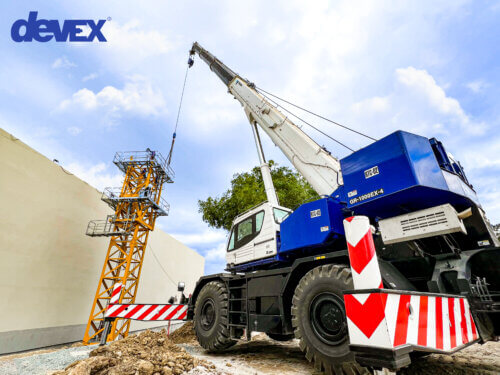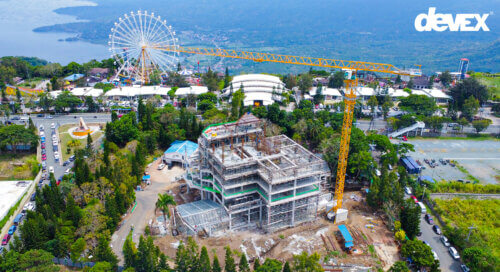In the dynamic world of construction, the term “crane” often brings to mind towering structures and heavy machinery lifting materials to great heights. Cranes are pivotal in the construction industry. Understanding their types and functionalities can provide valuable insights, especially for businessmen involved in construction projects. This article delves into the differences between two commonly used cranes: mobile cranes and tower cranes.
A crane is a machine designed to lift, lower, and move heavy materials. It is an essential tool in construction, manufacturing, and transportation industries. Cranes can be classified into various types based on their structure and usage. Among these, mobile cranes and tower cranes are prominent due to their distinct features and applications.
Mobile Crane

Definition and Structure
Mobile cranes are versatile lifting machines mounted on a mobile platform, which can be a truck, crawler, or even a rail system. They are designed for flexibility and ease of movement, making them ideal for tasks that require frequent relocation.
Key Features
- Mobility. The most significant advantage of mobile cranes is their mobility. They can be driven to the site, set up quickly, and moved as needed, providing great flexibility in various job sites.
- Compactness. Mobile cranes are generally compact compared to tower cranes, making them suitable for urban environments and areas with limited space.
- Setup Time. These cranes require minimal setup time. They can be quickly deployed and used for immediate lifting tasks.
Mobile cranes are used for various applications, including:
- Short-term construction projects
- Road and bridge construction
- Emergency rescue operations
- Transportation and logistics
Tower Cranes

Tower cranes are a familiar sight at construction sites, especially for high-rise buildings. These cranes are fixed to the ground or sometimes attached to the structure itself. They can rise to impressive heights, making them essential for large-scale construction projects.
Key Features
- Height and Reach. Tower cranes are renowned for their height and reach. They can lift materials to significant heights, making them indispensable for constructing skyscrapers and tall buildings.
- Stability. Fixed to the ground or a structure, tower cranes offer superior stability, allowing them to handle heavy loads safely.
- Long-term Use. These cranes are typically used for long-term projects where they remain in one location for extended periods.
Tower cranes are suited for:
- High-rise building construction
- Large infrastructure projects
- Projects requiring heavy lifting at great heights
Comparing Mobile Cranes and Tower Cranes
Mobility vs. Stability
- Mobile cranes offer unparalleled mobility, making them perfect for projects requiring frequent relocation. In contrast, tower cranes provide exceptional stability and are better suited for long-term, high-rise construction.
Setup and Flexibility
- Mobile cranes boast quick setup times and can be deployed rapidly. Tower cranes, however, require a more complex setup but provide extensive reach and lifting capabilities once installed.
Space Requirements
- Mobile cranes are ideal for confined spaces and urban settings. Tower cranes, with their need for a stable base and significant height, are best suited for large construction sites.
Choosing the Right Crane for Your Project
Choosing the appropriate crane depends on the specific needs of your construction project. Here are some considerations:
- Project Duration. For short-term projects or tasks requiring frequent moves, mobile cranes are the best choice. For long-term projects, especially those involving high-rise construction, tower cranes are more suitable.
- Site Conditions. Evaluate the space and terrain of your construction site. Mobile cranes can navigate tight spaces and rough terrain, while tower cranes need a stable base and ample space for installation.
- Lifting Requirements. Consider the height and weight of the materials to be lifted. Tower cranes excel in lifting heavy loads to great heights, while mobile cranes offer versatility for various lifting tasks at different locations.
The construction industry in the Philippines continues to evolve, with significant investments in infrastructure and urban development. As cities expand and new projects emerge, the demand for both mobile and tower cranes is expected to grow.
Mobile cranes will remain essential for their flexibility and rapid deployment. On the other hand, tower cranes will continue to dominate high-rise construction projects, shaping the skylines of cities across the country.
Understanding the differences between mobile cranes and tower cranes is crucial for making informed decisions in construction projects. Both types of cranes have unique advantages and are suited to specific tasks and environments. By selecting the right crane, businesses can enhance efficiency, safety, and productivity in their construction endeavors.
Written by: Christian Kimp Atip


Comments are closed here.